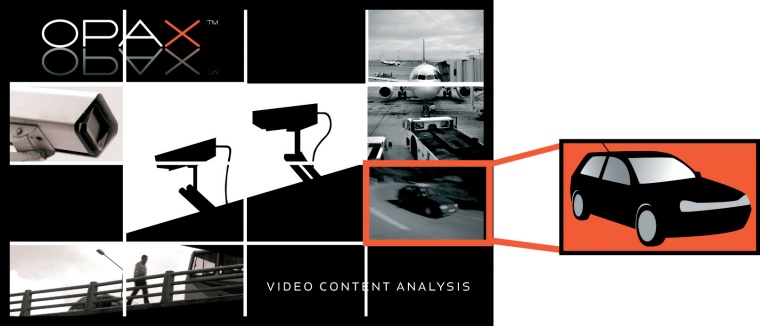Opax AS: Video Content Analysis and Perimeter Defence
Opax AS: Video Content Analysis and Perimeter Defence. Video Content Analysis (VCA) is gaining acceptance in the security market but there are some hurdles. Too many customers have...


Opax AS: Video Content Analysis and Perimeter Defence. Video Content Analysis (VCA) is gaining acceptance in the security market but there are some hurdles. Too many customers have been sold unsatisfactory solutions. Negative press about VCA will slow down market acceptance. VCA software manufacturers and system integrators must make a joint effort to release the true market potential.
VCA experiences a rapid growth, a trend that is expected to last. Driven by both the increasing maturity of the technology and the market demands, VCA has now reached a point where the technology is available and cost-effective. VCA can instantly add value to new and existing CCTV systems. The VCA market, despite the recent growth, is still in its infancy.
Although some of the algorithms have been around for more than 30 years, bottlenecks have prevented the practical use of advanced VCA systems. The limiting factors have been technical issues such as insufficient processor power, and the fact that the market has not yet been ready for these kinds of systems. The increasing amount of cameras installed creates the need to go from information overload to information control.
VCA relieves the CCTV operator from tiring tasks and helps him focus on the important information. But extensive marketing has created very high expectations to what current VCA technology can do. This “anticipation gap” has led to frustrated operators, customers and resellers. By explaining some of the possibilities and limitations of current VCA technologies, we hope to close this “anticipation gap”.
VCA Technology Adoption
Customers invest in video analytics technology for many reasons, but in the security market focus is increased security and increased return on the investment in video surveillance equipment. Perimeter defence is a difficult application for any VCA system due to varying lighting and weather conditions. To overcome these difficulties, the video surveillance system as a whole must be designed accordingly.
Integrators must build confidence in the technology by implementing successful solutions because unsuccessful installations will eventually slow down market growth. The following two quotes from users of early VCA systems illustrate this: “The system is not in use, we had to turn it off, it was too difficult to maintain.” “The system gives too many false alarms; the operators have lost faith in the system. It wasn‘t as the sales people told us.”
With experiences like that, customers are sceptical towards any solution containing video content analysis. This is hurting not only the integrator/resellers reputation, but the entire VCA industry as a whole.
VCA Factors
Choosing the right VCA technology can be difficult as a number of factors have to be considered:
- Reliability: the detection probability versus the false alarm rate, combined with the software stability.
- Functionality: the end-user experience as well as the system product range.
- Price: not only the level of security compared to the cost of purchase and the life-time cost of that solution. The return of investment can also be measured by efficiency gain and company reputation, etc.
VCA Technology Is Not Magic
Advanced image/video processing algorithms performance relies heavily upon the implementation. Each system is fine-tuned by a large number of parameters whether the parameters are tuned on site, in the factory or by computer learning mechanisms. Each system has its strengths and weaknesses. Some systems are designed for close range detection, and others are designed primary for long distance detection.
The entire system design, from site planning, camera mounting and network installation to the end configuration, is important for a successful installation. If the input to the VCA system is not satisfactory, the end result will naturally be poor. Rubbish in – rubbish out.
There are many factors influencing the input where the main ones are: weather, changing light conditions, camera vibration, the image resolution, camera field of view, vegetation, frames per second and so forth. It is the integrator’s responsibility to consider all these factors.
Plug and Play
We do not believe in “plug and play”. The VCA system in itself can be easy to install and configure, but in demanding conditions it will not perform well, if at all, unless those conditions has been taken into account during the system design and installation. Implementation has to be made by competent integrators if the end result is to be satisfactory. A high-end customer needs a tailored solution.
The integrator’s role is to come up with the best solution for that particular setting. It should be easy to design and implement systems correctly but there is still the need for competence when it comes to the technology’s strengths and weaknesses.
In summary, it is no good to have innovation that works if the VCA solution is not given the input it needs.
Solution to Achieve Successful Implementations
We believe that it is not enough to have a well documented, user friendly product in order to succeed. Opax has gone a step further by requiring that their certified partners have to go through a certification course with an exam before they are allowed to sell the solution. The certification programme teaches the VCA technology basics, camera choice and positioning, lighting design and much more. Such a course ensures that the technicians are confident not only in the Opax product range, but also in the rest of the process, from design to camera mounting. Such knowledge is highly valuable also if they were to choose another VCA system.
In addition to the certification, Opax has a dedicated task force to assist the integrator’s technicians. The task force can help with the system design, the implementation as well as the long-term service of the solution. The task force can naturally provide remote as well as on-site support.
Realising the Market Potential
Close cooperation between the VCA provider and the integrator will be of mutual benefit. Together they can create and capture the huge market potential.
Ola Edman
Contact:
Opax AS,
Kjeller, Norway
Tel.: +47 93840668
Fax: +47 64844301
oe@opax.com
www.opax.com
most read

Airbus Defence and Space: Security as a strategic pillar of Europe's defense capability
Airbus Defence and Space protects sites, technologies and employees with modern security and cyber solutions - strengthening Europe's resilience in uncertain times


Liverpool Heart and Chest Hospital Transforms Security with Verkada’s Hybrid Cloud Technology
NHS Trust boosts safety and efficiency with Verkada’s cloud-managed cameras and AI-powered incident response

Dormakaba: Smart Access with Spatial Experience
Smart Access at The Henderson Enabled by dormakaba Access Solutions

Is Your Venue Ready for Martyn’s Law?
Martyn’s Law demands stronger security by 2027. Is your venue prepared to protect and respond?








